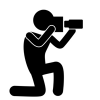Search the Community
Showing results for tags 'exposure blending'.
-
I have been exploring Exposure Blending in Affinity Photo. The addition of embedded/linked raw edit and the new live luminosity range masks has the real potential for setting a new standard in exposure blending. In the past, Photoshop has been the go-to for exposure blending. Unfortunate, this is a very complex task. A number of panels and plugins have been created to allow Photoshop to ease the difficulty of exposure blending. It still is a very advanced process for Photoshop users. Affinity Photo 2 substantially improved on the exposure blending experience. I will highlight some key features that really improve exposure blending in Affinity Photo, as well as some shortcomings. 1) Creating Luminosity masks for Exposure blending In Photoshop, creating luminosity masks is very much hit and miss. You create luminosity masks using apply images or the channels, and then see how it looks and repeat until you have a mask you think will work. You may use other adjustments (like levels) to fine tune the mask. As mentioned, there have been a number of panels and plugins created to ease this operation. Affinity Photo greatly improves this experience. Since luminosity range masks are live, you can watch the mask creation using the preview checkbox or watch the blend in real-time. This greatly improved the accuracy and speed. In addition, since live luminosity masks employ a curve, complex luminosity mask can be created that would be virtually impossible in Photoshop without the use of a third-party panel or a lot of manual mask manipulation. Unfortunately, I have encountered on issues with current implementation of luminosity range masks. For a typical workflow, 2-3 exposures and use in an exposure blend (more are occasionally used for special cases). These exposures are placed on separate layers for blending. The first layer (base) contains the exposure where the midtones are correct. All other exposure layers will be blended on top of this layer. The second layer is typically the exposure where the shadows are correct. This layer is blended to the base laying using a luminosity mask derived from the shadow area of the base layer. This is, unfortunately, not possible using luminosity range masks. The mask will always be based on the current layer. There is no way of forcing the live luminosity mask to be created from the base layer. Note: it is possible to create a valid luminosity mask using the current layer but may be slightly more difficult under conditions where the base and shadow layers exposures are very different. This difficulty can be greatly reduced with exposure matching (discussed next) The third lay layer, containing accurate highlights is typically blended using a layer mask created based on this (current) layer. This works great. Note: given the fact that luminosity range masks base the mask on lower layers if the current layer is an adjustment or live filter. It would be very useful to have a checkbox that forces this behavior. 2) Matching In exposure blending, it is common to see blending transition issues where the luminosity becomes flat or colors are incorrect. This is typically caused when blending two exposures that are too far apart. This is easily corrected by adjusting the exposure levels of the shadows or highlights exposure to closer match that of the base layer. When done correctly, the dynamic luminosity contrast and colors of the blend vastly improved. In Photoshop, this is typically done by making the shadow and highlight layers smart objects and then using camera raw to adjust their exposure levels to closer match base. This can be a trial and error where camera ray is called multiple time to tweak the adjustments. In Affinity Photo, the new raw edit greatly improves this experience. By using the show all layers checkbox, you can see the effects on the blend dynamically as you adjust the exposure levels, It is possible to perfectly match the two layers for the optimal blend. This level of accuracy is not possible without a lot of trial and error in Photoshop, 3) Presets At the beginning of my explorations in exposure blending I was very excited for this feature of the luminosity range masks. The ability to create a set of presets and export them so that they can be imported on other installations or shared with other users seemed to be a great possibility. Unfortunately, presets cannot be exported or imported. This makes the usage of presets only marginally useful (for me anyway). I cannot justify spending much time creating presets that will only be available for the current installation. Instead, I can use the predefined presets and then adjust from there. 4) Aligning layers While it is highly advised to use a tripos when shooting exposure brackets for blending (or HDR), it is still possible that the exposures will need to be aligned. This can be caused by environmental conditions during the shoot (high winds, soft ground where the tripod may be slowly sinking, …) or the type of exposure brackets being created. Unfortunately, the only way to do automatic layer alignment in Affinity Photo is by using a stack. When using a stack, all raw information is lost. This defeats the advantage of using raw image content when doing matching. Photoshop also has a similar issue. While they have an align layers option, smart objects are not supported. The raw data is also lost. It would be a huge win for Affinity Photo is it could preserve raw information when doing stacks. This would greatly improve the user experience over Photoshop. I also wish there was a passthrough option for stacks. That way, the images could be left in the stack without moving (like a folder). I am continually evaluating exposure blending in Affinity Photo. Overall, I see it as a substantial improvement over Photoshop. Craig
-
I’m trying to find the best way to use new live luminosity range masks in Photo V2 for exposure blending. I think it’s possible to reduce computational time, memory usage and file size, compared to traditional workflow. Instead of creating a set of luminosity masks saved as spare channels (really tricky and requires a complex macro), now I just use a preset of curves for luminosity range masks suitable for lights, darks and midtones. Assuming there are two or more staked pictures with bracketed exposure and starting from the first one that has to be blended with the base exposure underneath, I’m following these steps: 1. Add a live luminosity range masks as child of the picture layer that must be masked 2. Select preview for viewing the mask in black and white 3. Tweak luminosity range mask curve or use presets form the menu 4. Add an empty (black) mask as child of the same picture layer (it hides the visibility of the picture layer) 5. Select the picture layer 6. Make “Selection From Layer” (“Ctrl+clik” on the layer thumbnail or “Ctrl+Shift+O” or from “Select” menu) 7. A new luminosity selection is available as marching ants appear on the screen 8. Delete the luminosity range mask 9. Hide marching ants (optional) 10. Select the empty (black) mask 11. Paint with a white brush (choosing proper opacity) on the black mask with the active luminosity selection to reveal the picture layer Steps form 4 to 8 can be recorded as macro to speed up workflow. I have never used Photoshop, but I think new Live Luminosity Range Masks could be more effective than functionalities offered by some panels available for Photoshop. I hope it could be useful and eventually improved by your suggestion.
-
Dear Affinity Users, I'm heavily struggling to combine 3-off images consisting of a focus merge, a dark exposure for the sky and a stack to smooth the water in the final image. I created the focus merge and the stack separately. The dark exposure for the sky is a single image. I managed to create a prelim image using blend ranges but I'm losing sharpness in the foreground. I would like to maintain the sharpness in the foreground. Is there any clever method on how to combine a focus merge and a darker exposure for the sky? I tried it manually as well with manual image alignment and masking but the result was not satisfactory. All images were shot with the camera on a tripod. Thanks in advance for any help, Regards, Michael
- 6 replies
-
- focus merge
- combine
-
(and 2 more)
Tagged with:
-
I'm new to AP and bought it two weeks back. Spent some hours on seeing the tutorials. Went through Luminosity masks (forum topic: /topic/27214-luminosity-masks , by Smadell ) and tried various methods for painting-in the selections onto masks, aligning multiple exposures, etc. Today I attempted exposure blending of two photos. The workflow is as follows. Individually processed the two photos for exposure, white balance and slight color enhancements. Saved as tif. Then opened both photos from FILE>NEW STACK. selected "scale, rorate and translate" in the pop-up. Then ungrouped the stack. Now the two pictures are aligned and available as two pixel layers. Used "luminosity visualization" macro on one layer to select a proper mask. Decided on L4. Then from macro "Luminosity selections" , loaded L4 into a mask for the top layer. Did some brushing with white/black color and various flow/hardness levels to make the mask for smooth transition between the layers. I am posting the final result and the two unprocessed raw files(in jpg). Lancos non-separable was used for jpg export. Color space used in AP for all editing is Pro-photo RGB. Picture taken with Nikon D3100, kit lens 18-55, tripod, ND64 filter, f11. Bright shot taken at 30 sec, dark at 6 sec. ISO 100. First image is the final blended image and the last two are the un-processed input images used as layers.






